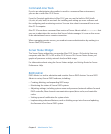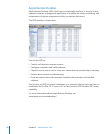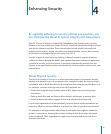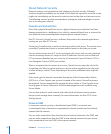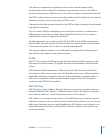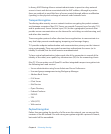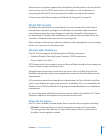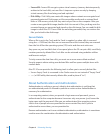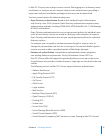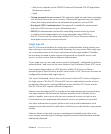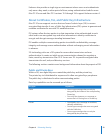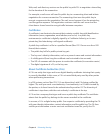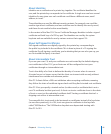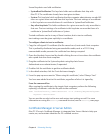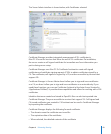
 Secure VM: Secure VM encrypts system virtual memory (memory data temporarily
written to the hard disk), not user les. It improves system security by keeping
virtual memory les from being read and exploited.
 Disk Utility: Disk Utility can create disk images whose contents are encrypted and
password protected. Disk images act like removable media such as external hard
disks or USB memory sticks, but they exist only as les on the computer. After you
create an encrypted disk image, double-click it to mount it. Files you drag onto the
mounted image are encrypted and stored on the disk image. You can send this disk
image to other Mac OS X users. With the unlocking password, they can retrieve the
les you locked in the disk image.
Secure Delete
When a le is put in the Trash and the Trash is emptied, or when a le is removed
using the rm UNIX tool, the les are not removed from disk. Instead, they are removed
from the list of les the operating system (OS) tracks and does not write over.
Any space on your hard disk that is free space (places the OS can put a le) most likely
contains previously deleted les. Such les can be retrieved using undelete utilities
and forensic analysis.
To truly remove the data from disk, you must use a more secure delete method.
Security experts advise writing over deleted les and free space multiple times with
random data.
Mac OS X Server provides the following tools to allow you to securely delete les:
Secure Empty Trash (a command in the Finder menu to use instead of “Empty Trash” Â
Â
srm (a UNIX utility that securely deletes les, used in place of “rm”)
About Authentication and Authorization
Authentication is verifying a person’s identity, but authorization is verifying that
an authenticated person is allowed to perform a certain action. Authentication is
necessary for authorization.
In a computing context, when you provide a login name and password, you are
authenticated to the computer because it assumes only one person (you) knows the
login name and the password. After you are authenticated, the operating system
checks lists of people who are permitted to access certain les, and if you are
authorized to access them, you are permitted to.
Because authorization can’t occur without authentication, authorization is sometimes
used to mean the combination of authentication and authorization.
56 Chapter 4 Enhancing Security



